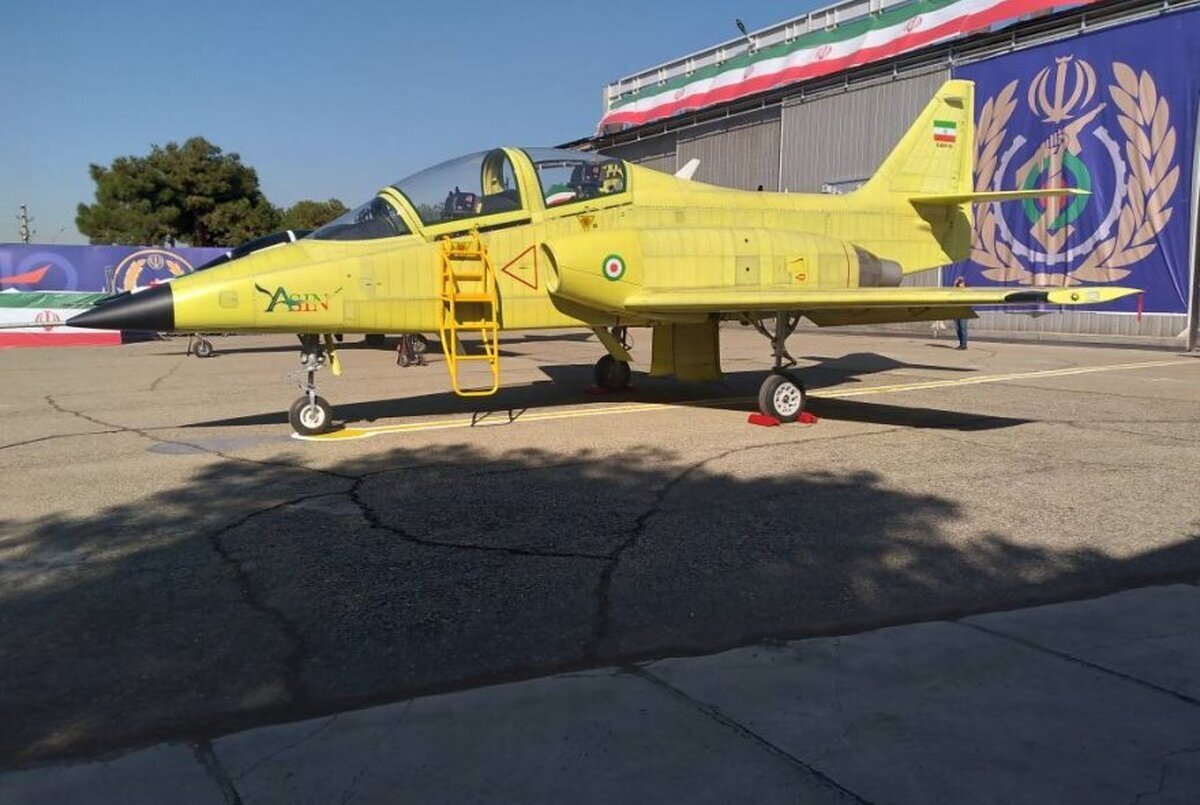Yasin training jet production line goes on stream

TEHRAN- The production line of the domestic Yasin training jet, which can also be used for close air support (CAS), was inaugurated on Saturday morning in Tehran.
Speaking at the inauguration ceremony in Tehran on Saturday morning, Iran’s Defense Minister Mohammad Reza Ashtiani said, “Training fighter pilots is one of our key concerns since the procedure is of utmost importance and involves training aircraft in different classes.”
The defense minister also said that the second prototype of the Yasin training jet, which was displayed on Saturday, was designed by professionals and specialists at the Iran Aviation Industries Organization (IAIO) years ago.
The qualities of the homegrown training jet make it appropriate to be deployed for close air support of military aircraft against hostile targets, Brigadier General Ashtiani pointed out.
Ashtiani stated that the majority of the sophisticated aircraft’s military gear and equipment have been localized.
For his part, Brigadier General Hamid Vahedi, who is in charge of the Islamic Republic of Iran Air Force (IRIAF), said, “Previously, our fighter pilots used to be trained abroad. The first sector affected as a result of the sanctions against our country was this field, which created difficulties for us in terms of training.”
Vahedi added, “Utilization of the new aircraft will make training duration more complete and shorter.”
In comparison to the initial prototype presented on October 17, 2019, during a ceremony in the Shahid Noje Airbase in Iran’s western province of Hamadan, the current version of the Yasin training aircraft appeared to have been far more advanced and evolved in terms of tactics.
The avionics, engine, landing gear, and ejection seat for the Iranian jet trainer were all developed domestically.
Its radome is equipped with aerial weather radar that was produced by domestic knowledge-based firms.
Yasin is able to fly up to 1,200 kilometers and weighs 5.5 tons.
The aircraft can land and take off at a speed of at least 200 kilometers per hour due to the shape of its wings.
Iranian military specialists and engineers have achieved great advances in manufacturing a wide range of indigenous weaponry in recent years, allowing the armed services to become self-sufficient.
Authorities have frequently stated that Iran would not hesitate to develop its military capabilities, particularly its missile power, which is only for defensive purposes, and that Iran’s defense capabilities will never be open to negotiation.
Ayatollah Seyed Ali Khamenei, Leader of the Islamic Revolution, has consistently called for measures to preserve and strengthen Iran’s military capabilities, criticizing foes for doubting the country’s missile program.
Leave a Comment